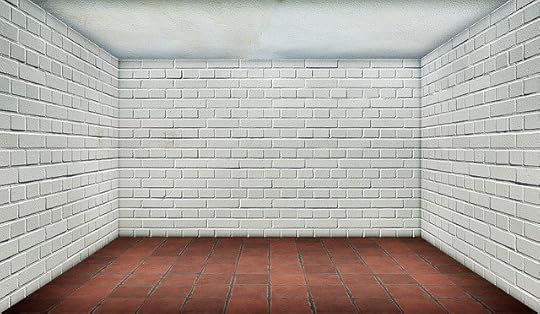Loci Method: 9 PRACTICAL Memory Palace Practice Tips
 Are you intimidated by the idea of building your own Memory Palace using the loci method?
Are you intimidated by the idea of building your own Memory Palace using the loci method?
After all, the word “palace” brings to mind an elaborate dwelling.
It’s huge.
And complicated, right?
It doesn’t have to be that way.
Just think of the phrase “Memory Palace” or “Mind Palace” as a name that helps you cherish the knowledge you put into it. It’s not really about the place itself.
And the term “loci method” really just means that we’re turning space itself into a mnemonic device. I think of this memory tool as a “location-based mnemonic.”
Personally, whenever I get stuck on how to best use the technique, I mind map out as many method of loci examples as I can.
But on this page, I want to go further.
I want to help you learn the loci method well and build your first Memory Palace Network in a way that is completely stress-free.
That’s why I’ve put together these nine practical tips that will help you practice the technique once you’ve learned it.
Let’s dive in.
#1: Learn To Use The Loci Method Simply
This means exactly what you think.
No clickbait here. Just keep it simple.
Don’t overcomplicate or overthink the Memory Palace technique.
It’s easy to overthink and analyze, of course. It’s in our nature, right? Well, we can still scrub it out. Here’s some help:
#2: Add Complexity As Your Skills Grow
Just because we want to keep things simple, doesn’t mean we’re going to stand still.
Although you use of the method of loci should be simple in the beginning, naturally adding complexity as your skills grow is important.
For example, your first simple Memory Palace of your childhood bedroom can grow to include:
Your entire home
Your block
The walk to school
The drive to work
Churches, cafes, art galleries
Other Memory Palace examples
But before you expand, you’ve got to get good with just one Memory Palace.

That means starting with your existing competence. Don’t overcomplicate things.
With practice you will see that there are some places where simplicity will always rule and complexity is not desirable.
Ever heard of the phrase, “Just because you can, doesn’t mean you should?”
That’s a great rule of thumb to keep in mind when using this memory method.
#3: Use Different Sized Journeys
Once you have grown your practice to where you have built several Memory Palaces, you’ll want to have a way of linking them together, right? This is where the Method of Loci, or journey method comes in.
Consider this:
You’re planning a road trip to a big music festival several hours away.
You can take several routes to get there.
You want to get there as quickly as possible, to get your tent set up, your campsite secure, so you won’t miss any of the bands on the lineup. You’re not wasting any time between loading up your car and pulling up to the front gate.
Then on the way back you need some time to decompress. You’ve spent four days in a field, listening to the biggest names in music from sun up to well past sundown. You’re not in a hurry to get back to the “real world.”
You take the scenic route home, stopping at greasy spoon diners and tourist traps along the way. You make a game of it by telling Google Maps to “avoid highways” even.
Both these routes got you from point A to point B (or B to A as the case may be) but they were significantly different. They had a different purpose. Think of your journeys linking your memory palaces in this same way. You have shorter and longer journeys, more complex and simpler journeys, all to serve you differently.
#4: Use White Space
“Less is more.”
While it can be useful to have very condensed Memory Palaces, and those memory palaces can be filled and overloaded with tons of stations, it can also be very beneficial to see what happens when you have less. Try working in a manner that’s spaced out, instead of overloaded.

You can apply this idea to not only your Memory Palaces, but what you encode in them. Memorize less, encode less, and see if you’re able to have more recall from focusing on fewer pieces of information.
The goal is to avoid the “Dr. Faust effect.”
The legend of Faust warns us against a downfall caused by a greed for all knowledge. He was unsatisfied with a mastery, law, logic, science and theology, and turned to the dark arts, where he eventually was damned as he sold his soul to Mephistopheles.
Instead of just collecting information, never satiated, why not be satisfied with the big ideas, having an appreciation of the white space? You’ll find that your mind actually will fill in the blanks and you don’t need that overload of information. The white space will take care of itself.
#5: Complete Both Short Term And Long Term Projects
To keep your practice fresh, have both short and long term projects you are working towards.
A classic short term project is to have a daily run through of memorizing playing cards. Keep a deck handy (maybe beside your coffee pot in the morning, or near your reading nook) so you can shuffle and memorize a handful in your downtime.
For a longer term project, this may be learning a new language or memorizing a collection of poetry.
Toggling these two projects will keep you from becoming bored and burnt out with a singular goal.
#6: Explore Indoor vs. Outdoor Memory Palace Options
As you move toggle between short and long term projects, explore using indoor and outdoor Memory Palaces for your memory journeys.
As an alternative to viewing your memory tools as simply one large Memory Palace, what if you thought of it as a collection of smaller memory palaces?

Okay, Kevin… Not that far outside!
For example, a home is a collection of room, a room a collection of areas and corners. A park can be seen as a playground area, hiking trail, community pool.
(Or you can skydive and wander your Memory Palaces like Kevin Richardson does while using Recall Rehearsal for learning Japanese with mnemonics.)
Be flexible and bring a sense of playfulness to creating your Memory Palaces. They will be far more beneficial as living and growing entities instead of a static, fixed creation.
For more on outdoor Memory Palaces, check out my discussion with Lynne Kelly on the craft of memory.
#7: Understand That Memory Pales Are Pegs To Which You Can Add Pegs
Think of your Memory Palaces as pegs to which you can add pegs, or spaces to which you can add pegs.
When people first get started with memory techniques they may see these tools as mutually exclusive, instead of elements that can be used in partnership.
Yet, the Peg System works exactly how you would imagine, pegging or linking one thing to another. Building upon what you do know, you connect the new information to it in your mind.
(No, peg system is not that different from the pegword method, but it’s worth exploring both.)
#8: Persist with S.I.P.
Now even though I’ve broken down mastery of the Method of Loci down to nine simple tips, it may not always be easy peasy. You will be faced with challenges along the way. There’s just no getting around it. Success with these methods is not about not having those setbacks, but that you know how to deal with them.
And one of the best ways to deal with those challenges is to make sure you have a good library of memory training.
Use all of the information you have available to you. Utilize it constantly and consistently. Take S.I.P. to heart:
S = Study the techniques for yourself consistently over time
I = Implement what you learn from you study of memory techniques and its tradition.
P = Practice these techniques with information that improves your life.
Be ever vigilant in tweaking your practice and improving it. As Nicholas Castle found, this practice can release you from some big problems in life, as it did with his PTSD.
#9: Keep A Memory Journal
Finally, keep a memory journal. It is crucial to have a place, a record of what you’re doing, how you’re doing it. Only then are you able to proceed and know where you’re going if you know where you’ve come from.
Although you could use something like Evernote for better memory journaling, I personally don’t see the attraction.
Instead, consider going back to “keep it simple.”

And if you’re feeling overwhelmed, just start with just one of the tips on this page.
See how implementing it improves the ease and speed of which you can create memory palaces and progress through the Method of Loci.
Mix and match these principles to maximize your efforts and you’ll see just how effortless the process can be with practice over time. Then move on to these more advanced Memory Palaces training exercises.
The post Loci Method: 9 PRACTICAL Memory Palace Practice Tips appeared first on Magnetic Memory Method - How to Memorize With A Memory Palace.




